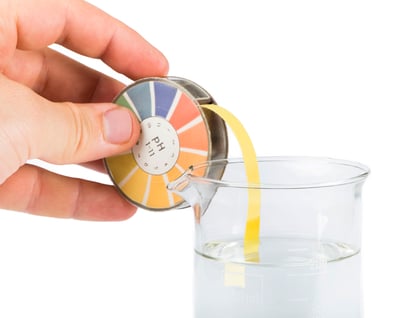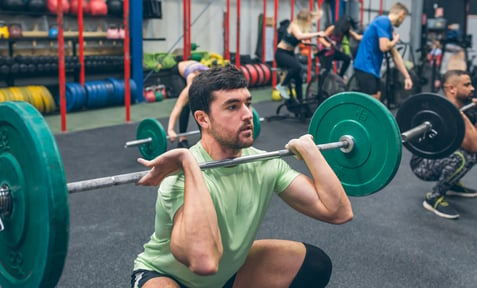 With the new school year upon us, it’s time to start thinking about “back to school” fitness. Summer was a time for adventure, vacation, trying new foods, and so much more. Although all that stuff is fun, it can get us out of a routine. As a newly graduated college student, I know how much a routine helped me stay on track for my classes. One thing I always included was exercise. Having consistent workouts is the first step toward a disciplined life.
With the new school year upon us, it’s time to start thinking about “back to school” fitness. Summer was a time for adventure, vacation, trying new foods, and so much more. Although all that stuff is fun, it can get us out of a routine. As a newly graduated college student, I know how much a routine helped me stay on track for my classes. One thing I always included was exercise. Having consistent workouts is the first step toward a disciplined life.
Studies show that working out consistently actually helps you stay with your schedule. When you plan specific times to exercise, you become more committed, and you can track your progress. When you see that you can stick to a workout schedule and are successful at it, you can start to change your view on other tasks in your life. When one area of your life becomes more manageable, it is easier to do the same with other aspects of your life.
Now you might be asking yourself, “Where do I even start?” Here are a couple of easy steps to making sure you create a workout routine that is a perfect fit for your schedule.
- Make fitness a priority: If fitness is important for you, you need to make time for it. Your health should always be your number-one priority. And as a wise person once said, “If you don’t make time for your health, you will make time for your illness." If working out is not one of your top priorities, it will not happen. If you really want to get the most out of it, you need to prioritize it.
- Be realistic: The key is to consistently do your best. Make sure you don’t sign up for too much. If you keep missing classes or training sessions because your schedule is too crazy, you’re going to get really discouraged when you don’t see the results you want. When starting a workout routine, start small. At NIFS we offer free classes to members throughout the week at different times (see the schedule here). This is a great way to get started, especially if you don’t know exactly where to start.
- Make goals: Making goals is one of the best ways to start your workout routine. If you know what you are working toward, you’re going to work harder to get it. Make sure these goals are SMART. This means that they are Specific, Measurable, Attainable, Realistic, and Time-bound. This will help you track your progress and really see successful results.
- Time it right: Make sure you go to the gym at a time that is good for you. If you have a lot of morning classes, go in the afternoon or evening or vice versa. If you're more of a morning person, make sure you get up early in the morning and work out. If you know you have a lot of schoolwork, only work out for 30 minutes. When it comes to timing everything, make sure you come up with a good plan and discern when is the best time for you.
- Short workouts count, too: Everyone is busy and sometimes crazy schedules are what stop people from working out. People think that they need to train for 60 to 90 minutes straight or else they won’t see any results. Research shows that 10 to 15 minutes of training can be beneficial for people throughout the day. So, if you want to, you could do a quick 10-minute workout four times a day and you would have completed a 40-minute workout!
- Come prepared: Make it a habit to pack a gym bag before you go to classes or work. This way you can go straight to the gym without any additional trips that can get you sidetracked.
- Get in more daily fitness: You can get in easy workouts by just doing everyday things. For example, you can take the stairs instead of the elevator, or walk instead of taking the bus. These seem simple, but they add up over the course of the week. A study from The Ohio State University found that you can burn around 20% more calories by just altering your walking pace instead of keeping a consistent speed. You can even make sure you’re active over the weekend. Go for a walk, go for a bike ride, go hiking, or even play a game of baseball.
- Be accountable, but reasonable: Some days are going to be harder than others, and you’re just trying to tackle it all. There are going to be many days where you don’t honestly have the time or energy to work out, and that’s okay! When those days happen, allow yourself to miss. But make sure you get moving the next day. Although you don’t want to create the habit of not working out, give yourself room to be human.
Working out does not have to be a scary or daunting thing. Make the most out of it and make it yours! Trying to balance school and fitness can be a lot, but it’s totally doable. Whether you are a student or parent of a student, do your best and keep pushing toward your goals!
This blog was written by Emily Lesich, NIFS Health Fitness Specialist. To learn more about the NIFS bloggers, click here.


 Alkaline vs. Acid
Alkaline vs. Acid Olympic weightlifting is one of the oldest sports that is still around to this day in the Olympics. Over time the sport has evolved to what it is today, and there are more participants at the national-level events here in the US than ever before. With the help of
Olympic weightlifting is one of the oldest sports that is still around to this day in the Olympics. Over time the sport has evolved to what it is today, and there are more participants at the national-level events here in the US than ever before. With the help of